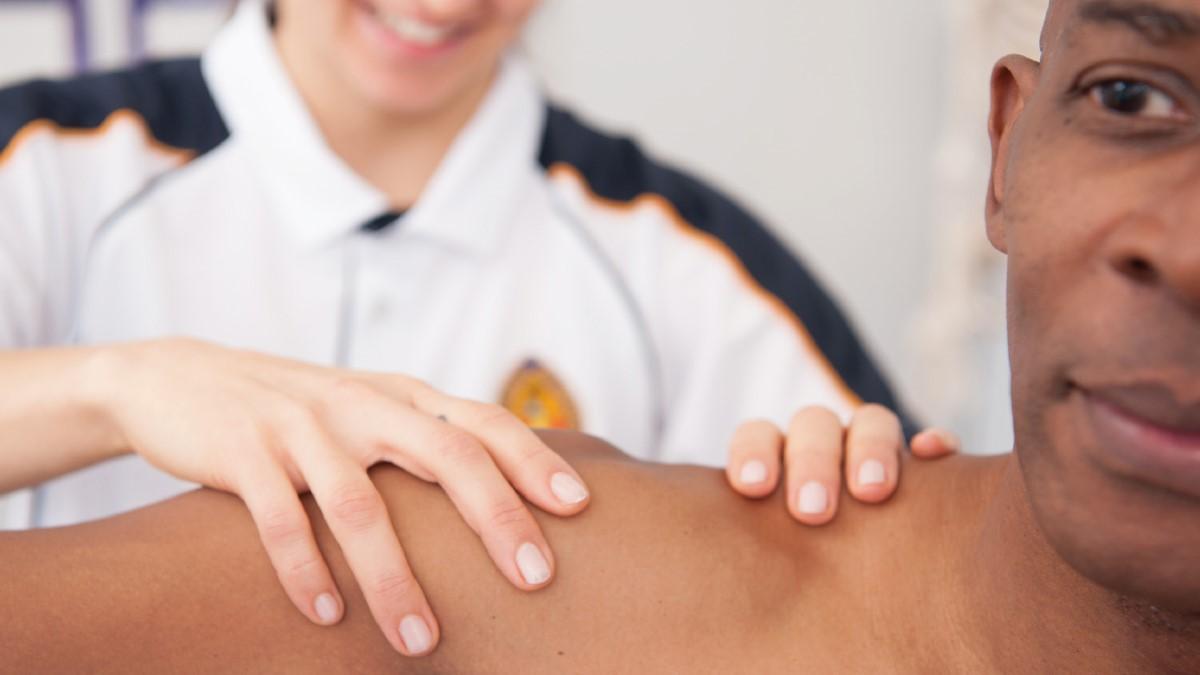Our latest research findings

What’s the issue?
Shoulder pain is common, especially among people over 45; it accounts for two in every 100 GP appointments.
Most (70 per cent) shoulder pain is caused by disorder of the rotator cuff muscles, which hold the shoulder joint in place.
Previous systematic reviews have found uncertainty about how best to treat rotator cuff disorders. Some evidence suggests that exercise, physiotherapy advice and corticosteroid injections work better than no treatment.
This is the largest trial carried out to date on treatments for rotator cuff disorders. It looked at improvements in pain and function with different treatment approaches.
What’s new?
More than 700 people with shoulder pain related to the rotator cuff were recruited and randomly assigned to receive either:
- up to six sessions of an exercise programme (that builds up over 16 weeks), tailored to them and supervised by a physiotherapist, plus exercises at home.
- one-off advice from a physiotherapist with a home exercise programme supported by a booklet and videos.
- a corticosteroid injection into the shoulder joint followed by six sessions of physiotherapy.
- a corticosteroid injection into the shoulder joint followed by one-off advice and a home exercise programme.
Exercises at home were a core part of treatment, regardless of which group they were in. People were asked to do their exercises five days per week.
Trial participants filled out questionnaires about shoulder pain and function at the start of the study, after eight weeks, and again at six months and 12 months.
After 12 months, the trial found:
- people reported similar improvements in pain and function, regardless of which physiotherapy they received; one-off advice worked as well as supervised exercise sessions
- the corticosteroid injection reduced pain and disability at eight weeks; however, there was no difference at 12 months.
The researchers also found that one off advice plus a corticosteroid injection could be the most cost effective use of NHS resources, though there was some uncertainty.
Why is this important?
A one-off session with a physiotherapist, followed by a home exercise programme supported by a booklet and videos, is an effective treatment for people with shoulder pain relating to a rotator cuff disorder. It had similar benefits to a comprehensive programme of supervised exercise with a physiotherapist (plus home exercises). The one-off session would free up time for both patients and physiotherapists and could save NHS trusts money.
Corticosteroid injections improved shoulder pain and function at eight weeks only.
NHS trusts and commissioning groups could incorporate the findings of this study into their routine treatment pathways for shoulder pain.
What’s next?
To support implementation, the researchers are working on a training package for physiotherapists to deliver the one-off advice session. Many physiotherapy services that took part in the trial are now using the one-off session, however, the researchers warn that self-management is not suitable for everyone. Some people, such as those with low literacy, or those in intense pain, may still need more physiotherapy sessions. Future research should explore best care for rotator cuff disorders which do not improve at 12 months.
Expert view: Brian Campbell extended scope and MSK physiotherapist and first contact practitioner, Tees Valley CCG
I work as a physiotherapist in GP services and am the first contact for people with musculoskeletal issues. I treat people with acute shoulder pain from initial diagnosis to longer-term management; this research is very relevant to my work.
Overall, the most important outcome from this paper is about cost-effectiveness. It suggests that a one-off appointment with an appropriately qualified person, plus information, is all that may be needed for people with rotator cuff disorders.
People may also need guidance and reassurance that the one-off sessions are appropriate for them.
And practitioners will need access to the information that was handed out in the study.
Additionally, it will be important to continue the follow up appointments at 24 and 36 months to see what the longer-term outcomes of the treatments are. We need to know whether symptoms return, whether people come back for further steroid injections, and how they get on with self-management of exercises. This would give longer-term assessment of cost-effectiveness, in keeping with the NHS Long Term Plan.
You may be interested to read
The full paper: Hopewell S, Keene DJ, Marian IR, and others. Progressive exercise compared with best practice advice, with or without corticosteroid injection, for the treatment of patients with rotator cuff disorders (GRASP): a multicentre, pragmatic, 2 × 2 factorial, randomised controlled trial. Lancet 2021;398:416–28 The trial website includes all papers related to the project.
Conflicts of interest: Sally Hopewell is a member of the NIHR Health Technology Assessment (HTA) Clinical Evaluation and Trials Committee.
Funding: This research was funded by the NIHR Health Technology Assessment programme.
Number of subscribers: 1




































